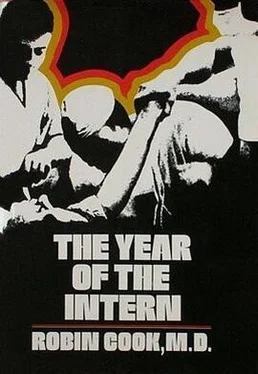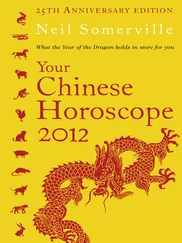The ER had completely changed in the fifteen or twenty minutes I took for lunch. A new group of people stood waiting, and eight fresh charts were waiting in the basket. Obviously no real emergencies were at hand, or the nurses would have called me immediately. Just more routine stuff. One of the new people was a chronic visitor to the ER, in for his usual shot of xylocaine to ease an alleged back disorder. His arrivals were so frequent and predictable that the nurses always had a needle full of xylocaine ready and waiting for me on the tray next to the patient. Kid Xylocaine, as we called him, had developed a certain expertise about his condition, and this was his time to shine, as he directed me where to insert the needle, how to insert it, and how much to give. Feeling somewhat victimized by this ritual, I nevertheless did what he wanted; he sighed with apparent relief and left.
Walking next into Room B, I was greeted once again by my drunk friend Morris, who had returned at last from the X-ray department. Flopped on an examining table and secured by a wide restraining belt, Morris held a large manila envelope filled with fresh X rays. He greeted me. “All I ever get is a goddamn intern. I don’t know why I come here any more.”
Lunch had made me mellow and somehow able to ignore this prattle as I took the X rays out of the envelope and began to hold them up, one at a time, against the light of the window. I didn’t expect to find anything of consequence, except perhaps in the upper left arm, which was badly discolored. Earlier, when I lifted and rotated the arm, Morris had rewarded me with a stream of obscenity. Something might be amiss there. I went through the whole stack of X rays — left knee, right knee, pelvis, right wrist, left elbow, left foot — on and on, without finding anything for the left arm and shoulder. Not there. Nothing to do but have the nurse return Morris to radiology. “They’re going to love you up there, Doctor Peters,” said the nurse. “He terrorized the X-ray department all morning and used up two boxes of film.”
“That doesn’t surprise me,” I said, picking up a handful of new charts and heading for Room C.
The afternoon babies were much like the morning babies, suffering mostly from colds and diarrhea. One had to be sponged for a temperature of 104.2, and another, about four years old, needed suturing for a laceration on his chin. Suturing children is very, very difficult. Their terror at being brought to a hospital, often bleeding and in pain, is only made worse by the papooselike contraption they are strapped into to keep them still. Not even the papoose could immobilize this boy’s chin; it was like hitting a moving target. The worst part for him was being under the sheet with the hole in it. After the sting of the xylocaine, he didn’t feel much of anything but pressure and slight pulling. Yet he screamed just the same, and hated it all the way. So did I.
A thirty-two-year-old man in another room had a catalogue of complaints, beginning with a dry throat and proceeding down the body. His real aim was to be admitted as a hospital patient, and when he realized that the dry throat hadn’t impressed me very much, his trouble shifted to a right-side chest pain. To test his reaction, I finally told him the hospital was already overcrowded, whereupon he stormed out in a rage, complaining that when you really needed a hospital it was always full.
The afternoon drifted by in a carelessly busy way. By now I had seen about sixty patients, par for the course, with no more than the usual sweat. But Saturday night was approaching, and that always meant trouble. Two older men with asthma walked in together, and the nurses put them into separate rooms with the positive-pressure breathing machines. The gentleman in Room C was wheezing away, his bony chest held at almost full inspiration, his back straight, hands on his knees. I asked him if he smoked. No, he answered, he hadn’t smoked in years. Reaching down, I slowly pulled the pack of Camels out of his shirt pocket, his eyes following my hand until he saw the cigarettes. When he looked up at me, the expression on his face, even in his suffering, was so comical yet warmly human that I couldn’t help smiling. It was like catching a small boy in a piece of silly mischief. Much of the emergency room’s appeal lay in its lavish display of the variety and folly of humankind.
Old friends kept turning up. Another drunk, well known to us, stumbled in, complaining of a fall over a rocking chair that had left him with a chronic leg ulcer! I had seen the same ulcer a few weeks before when the drunk was a ward patient — an eventful time for all of us. Despite rigorous security measures, he had stayed drunk for days on end, and his discharge was probably hastened when the chief resident found him behind the blood bank with two bottles of Old Crow and a female patient. This time I bandaged his ulcer and told him to come back to the clinic on Monday.
Between the drunks and the crying babies with colds, an ambulance pulled up unannounced, without siren or flashing red light. That meant it wasn’t much of an emergency. When the stretcher was unloaded, it revealed a thin lady of about fifty dressed in dirty, ragged clothes. I followed one of the nurses, who was saying they couldn’t get any response from this patient. And neither could I. The lady just stared at the ceiling, breathing heavily. She had a small laceration in the hairline of her forehead, but it wasn’t even suturable. She seemed fully conscious, and yet she was totally immobile. I began a neurological exam, testing first her pupils and then her reflexes. No bad signs. But when I tried to do the Babinski test, by lightly scraping the bottom of her foot with a key, she practically hit the ceiling, screaming that there wasn’t anything wrong with her feet, it was her head that hurt, and why was I fooling with her feet? She jumped off the examining table and disappeared down the hall, with a nurse in hot pursuit. Finally, we called the hospital administration and the police, who ended up dragging her away still screaming that she was all right.
Down in Room F was an elderly gentleman who had run out of his diuretic, or water-eliminating, pills and whose legs were swollen with excessive fluid. He turned out to be one of those people with a remarkable talent for talking continuously and apparently sensibly without saying anything at all. A torrent of words rolled out as I tried to examine him. He spoke of his extrasensory perception and of the many times he had been able to use it, especially in communicating with his wife, who had died several years previously. Against my will I paused to listen while he described how he could take a bottle of water and distill it into his own model of the universe. In fact, he thought the earth was one small portion of one molecule of some gigantic object from another universe in another dimension. A little dazed, I gave him a supply of pills, told him to stay off his feet for a while, and took up the next chart.
It was important to listen to these patients, despite the craziness and trivia. Every so often their ramblings were significant Once in the medical-school hospital a man had checked in to the ER complaining that he had eaten several shot glasses, without the usual complement of bread. The resident and intern began to escort him out the door, with the suggestion that he return in the morning, when the psychiatry department was staffed. Seeing their disbelief, the man grabbed at the intern’s pocket, coming away with a test tube and a wooden throat swab, both of which he quickly chewed up and swallowed while the house staff watched in paralyzed disbelief. They turned him around, then, and led him back to the examining room, softly suggesting that he stay overnight. In the X ray, his abdomen had looked like a bag of crushed marbles.
Читать дальше












